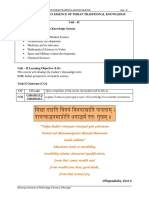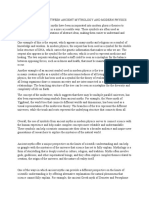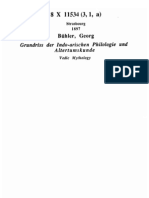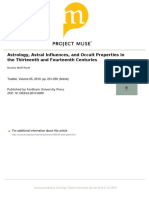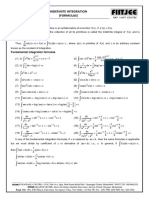Unveiling Vedic Science
and Mythical Creatures –
Vedic Mythology
In the ancient scriptures of India, Vedic science and mythology intertwine to reveal a profound
understanding of the natural world and the cosmos. At the heart of this vast knowledge system are
mythical creatures that embody cosmic forces and spiritual principles. Join us as we embark on a
journey to explore the fascinating intersection of Vedic science and mythology through the lens of
mythical beings.
**The Essence of Vedic Science**
Vedic science, rooted in the Vedas and other ancient texts, encompasses a comprehensive
understanding of the universe, including cosmology, astronomy, mathematics, medicine, and
philosophy. The knowledge contained in the Vedas reflects an advanced civilization that observed,
interpreted, and harnessed natural phenomena for spiritual and practical purposes.
Central to Vedic science is the concept of interconnectedness—the idea that all aspects of the universe
are intricately linked and governed by cosmic laws. This holistic worldview laid the foundation for the
development of various branches of knowledge, including Ayurveda (traditional Indian medicine),
Jyotish (Vedic astrology), and Vastu Shastra (architectural principles).
**Mythical Creatures in Vedic Mythology**
Vedic mythology abounds with a diverse array of mythical creatures that serve as allegorical
representations of cosmic forces and metaphysical concepts. These creatures inhabit the realms of gods,
�demons, and nature spirits, embodying qualities that reflect the interplay between the material and
spiritual dimensions of existence.
Let's delve into some prominent Vedic mythology creatures and their symbolic significance:
1. **Garuda**: The celestial eagle and mount of Lord Vishnu, Garuda represents courage, speed, and
divine protection. In Vedic science, Garuda is associated with the cosmic element of air (Vayu),
symbolizing the soaring spirit that transcends earthly limitations.
2. **Naga**: Serpent-like beings known as Nagas are guardians of water and fertility. In Vedic science,
water (Apah) is considered a vital element that sustains life and symbolizes purification and
rejuvenation.
3. **Yaksha and Yakshini**: Nature spirits known for their benevolence and association with forests,
rivers, and mountains. They embody the abundance of the natural world and represent the harmonious
coexistence between humanity and the environment.
4. **Gandharvas**: Celestial musicians and dancers, Gandharvas symbolize the harmonious integration
of art and spirituality. They inspire creativity and aesthetic expression, reflecting the interconnectedness
of beauty and divine grace.
5. **Kinnara and Kinnari**: Half-human, half-bird beings renowned for their elegance and melodious
voices. Kinnaras and Kinnaris epitomize romantic devotion and represent the synthesis of human
emotions with celestial aspirations.
**The Symbolism of Vedic Mythology Creatures in Vedic Science**
In Vedic science, each mythical creature embodies profound symbolism and metaphysical significance:
�- **Cosmic Harmony**: The creatures exemplify the interconnectedness of cosmic elements and
energies, illustrating the synthesis of material and spiritual realms.
- **Natural Principles**: Vedic mythology creatures personify natural phenomena and elemental forces,
providing insights into the laws governing the universe.
- **Spiritual Evolution**: Their stories convey spiritual teachings and moral lessons, guiding seekers on
the path of self-realization and enlightenment.
**Legacy and Relevance in Modern Times**
The legacy of Vedic science and mythology continues to inspire scholars, scientists, and spiritual seekers
worldwide. In contemporary society, there is a growing interest in integrating ancient wisdom with
modern scientific principles, seeking a holistic understanding of human consciousness and the cosmos.
By exploring the mythical creatures of Vedic mythology through the lens of Vedic science, we gain a
deeper appreciation of the profound wisdom embedded within these ancient narratives. They invite us
to contemplate the mysteries of existence and awaken to the interconnected web of life that binds us
all.
**Conclusion**
In the synthesis of Vedic science and mythology, mythical creatures serve as bridges between the
empirical and the transcendental, offering profound insights into the nature of reality and
consciousness. By embracing the symbiotic relationship between science and spirituality, we embark on
a transformative journey of self-discovery and cosmic exploration, honoring the timeless wisdom of our
Vedic heritage.




